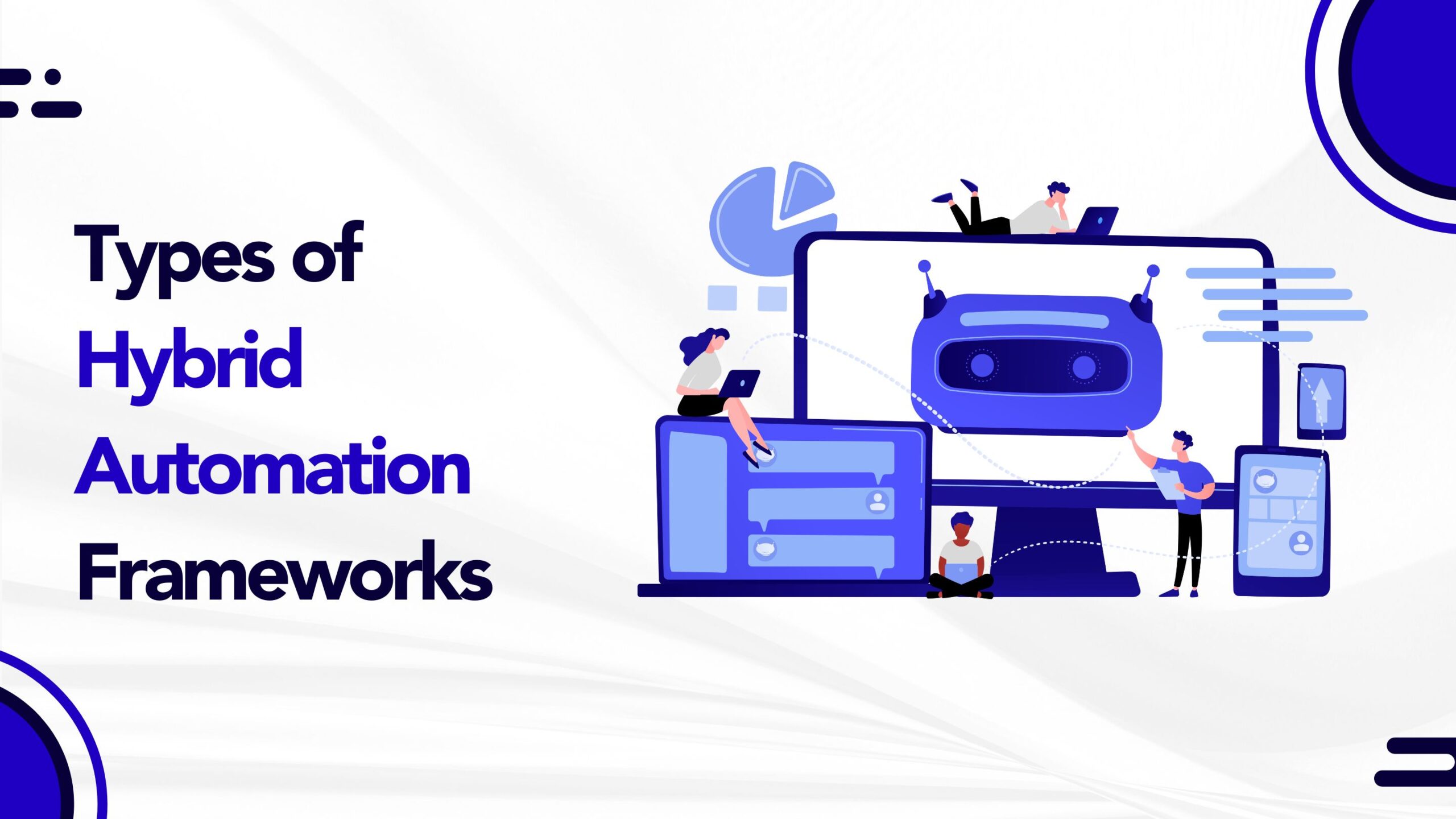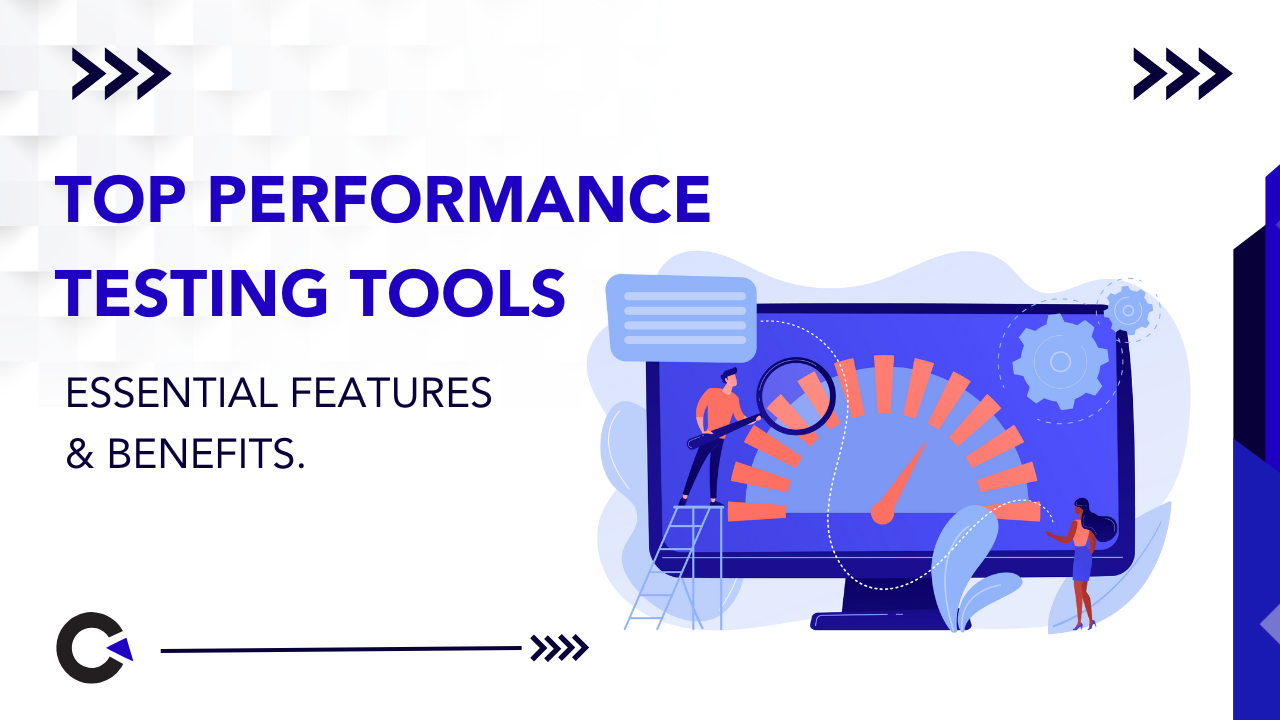
by admin | Dec 22, 2019 | Automation Testing, Fixed, Blog |
Test automation has become the obvious choice in most projects and for testing teams. As companies grow, their products become better and also more complex, leading to the need of better and more efficient non-regression test planning. Manual testing in such cases would need a large dedicated team, which would prove beyond the budgets of most projects. This leads to the requirement of meticulous automated tests. As a leading Automation Testing Services Company we know that while automating tests prove to be an advantage, there are several reasons why test automation would fail. As the experts, we know that comprehending these reasons would prevent pitfalls, and we list some of the reasons for better understanding.
Unworkable Expectations from Automated Testing Tools
There will be times when the product and or the tools fail to live up to the project expectations, and usually, the tools are blamed. The reason is that maybe the expectations of the automated tool used were inaccurate or more than it could have delivered. At the start, project owners make the mistake of believing that investing in a pre-scripted leading tool would get them instant ROI and all would enable all at the click of a button. Additionally, there are instances when project owners believe that the software would be able to automate the entire process across the project. It is necessary to understand that to put an automated testing tool to good use is a project in itself and requires meticulous planning and experimentation to ensure that it works across a range of testing environments.
How much and what to Automate
While a company may understand that total automation is not possible, they are unable to assess how must and what to automate to really achieve what they want from their software product. Even an expert would be unable to pinpoint the exact percentage or figure that would be adequate for automation tests – it depends on the application being offered and the needs to which business would be catering – an animated web application would be different to an e-commerce one.

‘Umbrella’ mindset
This mindset is one of the major causes of test automation failure. A one size fits all approach would prove detrimental and test automation would never work as per expectations. The aim instead should be towards updating to match changing factors, maintaining patience, and ensuring continuous improvement.
Lack of Understanding of Manual Testing
It is important to know that treating automated testing as a silver bullet is an incorrect and flawed approach. Automated testing is an extension of manual testing, and without understanding the manual method, the automated process would not fall into place.
Flawed Understanding of Automated Testing
The most common mistake that project owners and businesses make is to believe that automated testing does not require inputs and is extremely simple to undertake. It is incorrect to believe that an existing process for testing can simply be automated without a reconsideration of the entire approach.
Inadequate Resource Planning and Incorrect Staff Selection
It is a fallacy to believe that any tester or person involved in developing a product can run automated tests. It takes experts with specific skill sets to undertake designing, configuration, and implementation of test automation, as also excellent communication skills between project managers, developers, and the end client. Businesses must work with vendors consisting of teams with extensive and varied technical knowledge, and must not rely on inexperienced in-house staff.
Inadequate Attention Towards Test Reporting
The most accurate and meticulous testing would not be complete without thorough test report documents. Inexperienced teams would not pay the required attention to test reporting and analysis. The flawed analysis could lead to unattended defects, and be the cause of wasted precious time, resources, and efforts. It is important to remember that assuming the success of test results can lead to problems and lead to test automation failure.
Flawed Test Code
Despite meticulously following all testing strategies and steps, if test automation still fails, it could be because of test code errors, and it would be wise to relook at the test scripts.
In Conclusion
Boosting productivity is important for any company, and enhancing the quality of your product is what is required, and test automation is certainly the most efficient way to do so. The fact is that test automation enhances the quality and robustness of the software, provided it is implemented with caution and care. In order to reap the benefits and ensure no obstacles, businesses need to invest in an experienced team that can gain for them all the benefits that test automation has to offer. Connect with us to work with such a team and ensure hassle-free testing.

by admin | Nov 14, 2019 | Automation Testing, Fixed, Blog |
First, let’s demystify Salesforce. Salesforce is a Customer Relationship Management(CRM) solution on a cloud service development platform. An integrated platform that gives all your departments a single shared view of each customer. Therefore, Salesforce testing plays a crucial part in any organization that heavily relies on this platform.
Let’s explore the role of Salesforce Testers (ST).
They are Quality Engineers (QE) as opposed to Quality Analysts (QA) because they not only review codes for bugs, but also design, program, scale, and maintain complex Salesforce test frameworks. They even set up test environments from scratch, which is a critical part of the code review and release process. Testers with knowledge in Selenium web driver, HP Unified Functional Testing (UFT), Cucumber, IDE (Eclipse-based), Change Sets (Cloud Deploy), Ant migration tool, Workday, AssureClick, QTP, Jasmine, Karma, Junit, etc. play a pivotal role in Salesforce Automated Testing.
Salesforce Testers are expected to test projects that follow Agile, Waterfall, Iterative, Spiral, V-shaped, or even traditional software life cycles by reviewing codes to identify potential issues and offer implementation suggestions. An ST is expected to possess the skill, talent, and experience far superior to a developer or an analyst. They are required to know the ins and outs of such profiles, making their job exciting. As a career option, the growth prospects for an ST role are high when they add an ADM 201 certification to their resume. They can switch to a Business Analyst role in the future since they have a background in testing.
Most Salesforce Project core team consist of Business Analysts, Project Managers,QA Managers, Scrum masters, Salesforce Testers, Quality Analysts, Developers, and Administrators. In this team setup, the primary functions of an ST include testing services like functional, unit, manual, automated, load, performance, integration, deployment, security, regression, smoke, user acceptance, and CRM ad-hoc testing.
Let’s talk a little more in-depth about the roles and responsibilities of a Salesforce Tester.
1. Salesforce automation testing using Selenium or UFT testing platforms.
2. Conduct requirement analysis, develop strategies and execute test cases through
function maps (automated or manual).
3. Deploy data from sandbox to production and validate the codes as well as perform
equivalence partitioning and boundary value analysis.
4. Send product updates, identify production issues, and implement integrations to meet
customer needs.
5. Provide software development support through data flow diagrams using formal software specifications.
6. Analyze results and track issues by conducting user acceptance testing.
7. Participate in user story mapping, sprint planning, estimation, and feature walk-throughs.
8. Demonstrate expertise in Agile/Scrum frameworks for defect identification, impact
analysis, and regression testing.
9. Daily reports on progress, solutions implemented, and pending issues.
10. Stay up to date with Salesforce.com system upgrades and the constraints of CRM
applications.
In conclusion,
If you’d like to join the Codoid team as a Salesforce Tester, you will need to have not only the knowledge and experience mentioned above but also certain personal qualities. A deadline-centric and data-oriented professional with excellent interpersonal and communication skills. Keen ability to lead and work with cross-functional teams with exceptional organizational and project management skills.
Happy Testing!

by admin | Nov 16, 2019 | Automation Testing, Fixed, Blog |
Test automation reporting is an important component in the automation framework. Once your automated test suites are executed, test results will be the only artifacts to analyze failures. You will be forced to execute the failed test cases to investigate further if you don’t report the failures properly. As a test automation services company, we use automation testing dashboard reporting tools to report the results and logs. In this blog article, we have listed a few key test automation reporting tools which are widely used by automation testing communities across the globe.
Perfecto – Smart Reporting
This is a commercial automation testing reporting tool from Perfecto. Smart reporting is implemented with AI-Powered algorithms which provide the insights you need and reduce false negatives for less noisy reporting. This is the best Visual Analytics Tool for Test Reporting.
Calliope
Calliope.pro is a DevOps tool that generates comprehensive test results. You can also publish the results from Cucumber, TestNG, and JUnit. This is also a paid tool and its web dashboard allows your team to visualize and analyze the test results.
Dashing.io
Dashing is a dashboard framework. If you would like to customize your dashboard report and are not interested in paid or other predefined test automation reporting tools, then Dashing.io will be the right choice for you. You can build a dashboard using JSON output from test automation execution.
Allure
Allure is an open-source framework designed to create test execution reports that are clear to everyone in the team. It has client libraries for the following programming languages – Java, PHP, Ruby, Python, Scala, and C#.
Extent Reporting Framework
With Extent Framework, you can create beautiful, interactive, and detailed reports for your tests. Add events, screenshots, tags, devices, authors or any other relevant information you decide is important to create an informative and stunning report.
ReportPortal.io
ReportPortal web dashboard provides AI-powered automation testing report. You can manage all your automation results and reports in one place and submit & track defects with full evidence (logs, screenshots, comments, etc.) directly from a failed test case into a bug tracking system.

by admin | Nov 27, 2019 | Automation Testing, Fixed, Blog |
The impact of the disruption in the Test Automation space in the Software Testing (ST) industry is enormous this year. Due to the emerging Artificial Intelligence (AI) solutions, automation tool self-healing is a possibility as tons of data collected for every test run is fed into the device’s machine-learning algorithm. A transition towards Machine Learning (ML) will help report automated test runs and analysis. New automation-based tools will gain popularity, and Selenium WebDriver, the de facto browser-based automation tool for testers, will slowly be replaced. Testing organizations need to use the right tool for the right job in their development pipeline.
AI-based automation testing options introduced right now are paid solutions, and TestCafe, Cypress.io, and Jest are some examples. Although it is a contradiction since WebDriver is a W3C standard, the latest AI-based tools have record and playback functionality and use ML to help improve reliability during runtime. Continuous testing (CT) is the catchphrase now, and we can define it as the ability to instantly assess the risk of a new release or change before it affects customers. By implementing CT methodologies, automated tests are executed to check the quality of the software during each stage of the Software Development Life Cycle (SDLC).
Vendors are creating end-to-end testing solutions for their clients, and they need to acquire tools that aren’t part of their existing catalog. Performance testing or test management is causing more mergers/acquisitions this year. A huge collaboration is evident since the market is demanding investment in testing tools for businesses to develop quality software.
Let’s move on and break down some of these ST trends that will take over the industry.
Test automation services companies have promoted current software releases at optimum quality while decreasing ordinary testing efforts. The Codeless Test Automation tool increases scalability and facilitates software testers or business users to automate their test cases without worrying about the coding.
ST is when applications under specific conditions are tested to identify the risks involved in software implementation for greater automation to ensure optimal accuracy in the goal towards digital transformation. The industry is using AI to make such applications reliable and signify a shift from manual testing, and human interference towards a movement wherein machines gradually assume control.
Enhancements to AI and ST pave the path for Robotic Process Automation (RPA). Amongst transforming technologies like the Internet of Things (IoT), AI, ML, and Cognitive Computing, RPA is the latest entrant with the ability to re-invent the entire business process management aspect in this industry.
The demand to adopt new changes in the industry has resulted in an upgrade to practices and methodologies like DevOps and Agile. The QA team needs to plan and execute test strategies, provide quality products through continuous testing, making them accountable. Even complicated systems can drive faster deployments, assure optimum quality, and deliver cost-effective outputs.
QA Automation Services Companies have embraced IoT apps and devices to test performance, security, and usability to make technological improvements within the ST industry. Push testers and QA teams enhance their skill set regularly through analysis and modifications. The time-to-market of your product can make all the difference between success or defeat as users are becoming more selective, especially when it comes to the quality of the solutions.
That’s why at Codoid, our mantra is to ‘stay up to date with the times’ because, as an Automation Testing Services Company, we are continually upgrading our systems and streamlining processes while testing new developments in the industry. It helps us guarantee the best results for our clients, so don’t hesitate to pick up your phone and give us a ring. Let us help you bring forth solutions to catapult your business forward.

by admin | Nov 17, 2019 | Automation Testing, Fixed, Blog |
The benefits of test automation are widely known – delivering high-quality software and solutions speedily and cost-effectively. Automating tests is about assuming that the tests will be conducted repeatedly and with fewer errors. Despite these benefits, it is necessary to remember that automation of tests needs careful consideration prior to implementation owing to the time and financial investment required.
Working with a professional Test Automation Services Company will help to answer your questions and would consider several aspects before suggesting automation of tests. As experts, we will help define the requirements, put together goals, assess ROI, and ensure complete clarity for all stakeholders. We at Codoid, have put together a list of considerations required prior to automating tests.

- When a product has several new releases and defect correction in a running module, automation becomes necessary to check that the bug corrections have not introduced other bugs. The previous functionality would need testing as well, and doing this repeatedly manually would not be an efficient or effective method. The costs in terms of resources, time, and effort would not justify manual testing.
- It is far more effective to automate the tests for web applications that would have a very large number of users simultaneously interacting with the application. Creating the users manually would be extremely tough and time-intensive.
- Automate tests if there are frequent functional changes and GUI is almost static.
- Check the risks of automated testing prior to switching tests to automated mode. As an expert Automation Testing Services Company, we understand the many challenges and risks associated with test automation. Lack of skilled in-house resources is a major risk. Without personnel with programming knowledge, technical abilities, and the skill to adapt speedily to new technologies, automating tests could prove damaging. While manual testing requires investment to hire top-quality manual testers, automation has its share of costs. The initial in-house setup costs including buying automation tools, training the staff, and also maintaining test scripts are quite steep. Several companies now decide in favor of a highly skilled and professional partner offering Automation Testing Services, which proves cost-effective and mitigates the risks of software automation testing.
- Basic User Interface (UI) automation suffices if it is constantly changing. To automate a consistently changing UI would mean incurring a very high cost for script maintenance. As experts, we do not recommend this.
- Unless using an agile environment, it is not recommended to switch to automated testing in the early stages of SDLC since the costs will be prohibitive.
- Complete or 100% automation is not feasible or possible. There are several areas such as testing for compatibility, installation, recovery, UI, documentation – which must be tested manually.
- There are several tests that only require to be run once, and hence would not be a part of regression. Such tests/modules must not be automated.
- The automation suite should be usable or run about 15-20 times each for individual builds in order to pose a high ROI.
In Conclusion
While automation testing is the top method to achieve most of the objectives of testing, and is also the most effective use of time and resources, it is important to remain aware of the considerations of automating tests. It is not a wise move to expect unskilled and inexperienced staff to manage the expensive and comprehensive automation tools. Handling these tools is best left to the experts. We at Codoid recommend a combination of both manual and automation testing to achieve top results for projects. Connect with our experts to experience the benefits of both types of testing and who will ensure that your products gain the highest ROI for you.

by admin | Nov 1, 2019 | Automation Testing, Fixed, Blog |
Planning and strategy are the cornerstones of the SDLC and the main aim of testing should be to ensure that business requirements are met and the customer receives a product with zero defects. As a high-quality software testing company we consistently strive to meet this aim, gaining for us a wide base of happy and long-term customers. An effective test automation strategy requires some serious planning and in-depth expertise.

Even the most efficiently run business needs an efficient automation testing company partner to ensure that testing exercises run smoothly and the end product is defect-free – we are the go-to partner. We are experts in the realm of Automation Testing Services with experience in building cost-effective automation testing strategies for our clients, with result-orientation. We know that the absence of an effective test automation strategy, or even a poorly constructed one, would be the cause of testing failure. This in turn would lead to poor user experience, causing major losses both in terms of money and reputation of a company.
How Critical to Success is a Test Automation Strategy?
With the growth in market challenges and customer demands, software testing has undergone some significant transformations. Businesses want applications and software that can withstand pressures, including customer expectations, the risk of bugs, and security threats. Agile and DevOps approach ensures that testing is done regularly and thoroughly – forming a critical part of the overall test automation strategy. As experts in the realm of Test Automation Services and more, we understand the use of this approach to make the testing process faster, repeatable, and leading to a high-quality application.
Most appropriate test automation tool selectionThis is the main component that can guarantee the success of a test automation strategy. There are several tools in the market, and the ones we select are based on the testing and feature requirements. We consider parameters such as maintenance, the cost of the tool, training, and support required, the performance and stability of the tool, and more. Our clients gain peace of mind in addition to seamless testing and top-quality product.
Establishing Test Automation EnvironmentAfter identifying the needs of the test environment and acquiring tools and licenses, the test environment must be set up – replicating the production environment. This essentially implies that the configuration on each server of both hardware and software will be the same.
Automation Scripts must be ReusableThe code or script and framework should be reusable across teams at an organizational level. This reduces the time and effort required to develop scripts in the future.
Meticulous Execution and Management of Test CasesThe strategy must include a well-defined process to execute and manage the test cases, as per the defined criteria for success.
Result-OrientationThe results of each run of test automation must be measurable and have a result orientation. The test metrics of varying KPIs and dashboards would ensure the quantification and qualification of the software and highlight the standards of quality of the software before launching to the market.
Capture Learning in DocumentationIn the course of software development there would be several things that should be captured as learning for the future. It is important to put together robust documentation to ensure that future test automation strategies would be better and improved – especially not repeating mistakes from the past.
In Conclusion
As testing experts we can help businesses by recommending tools and techniques that would guarantee top results. As a testing partner, we prevent high maintenance, cost, and time by consistently revisiting and updating the automation test suites based on the previous latest version – over time. Since we are the experts, it is easy for us to run this as a continuous activity, allowing us to remove obsolete test cases, and regularly upgrade the automation suite with new functionalities. We understand the importance and practicability of setting short-term goals that are revisited periodically to ensure an iterative incremental model, which would lead to a robust and effective test automation strategy. Connect with us to know more about our expertise.






























